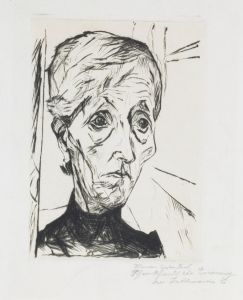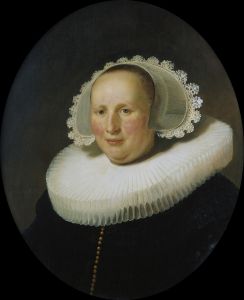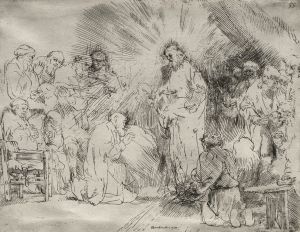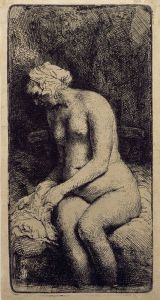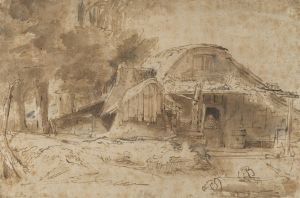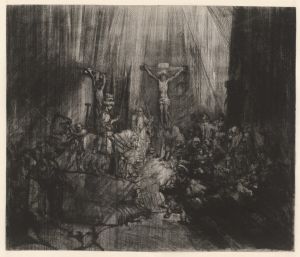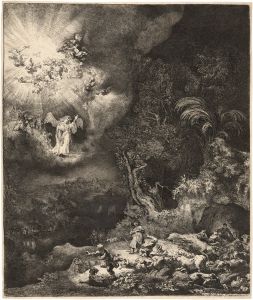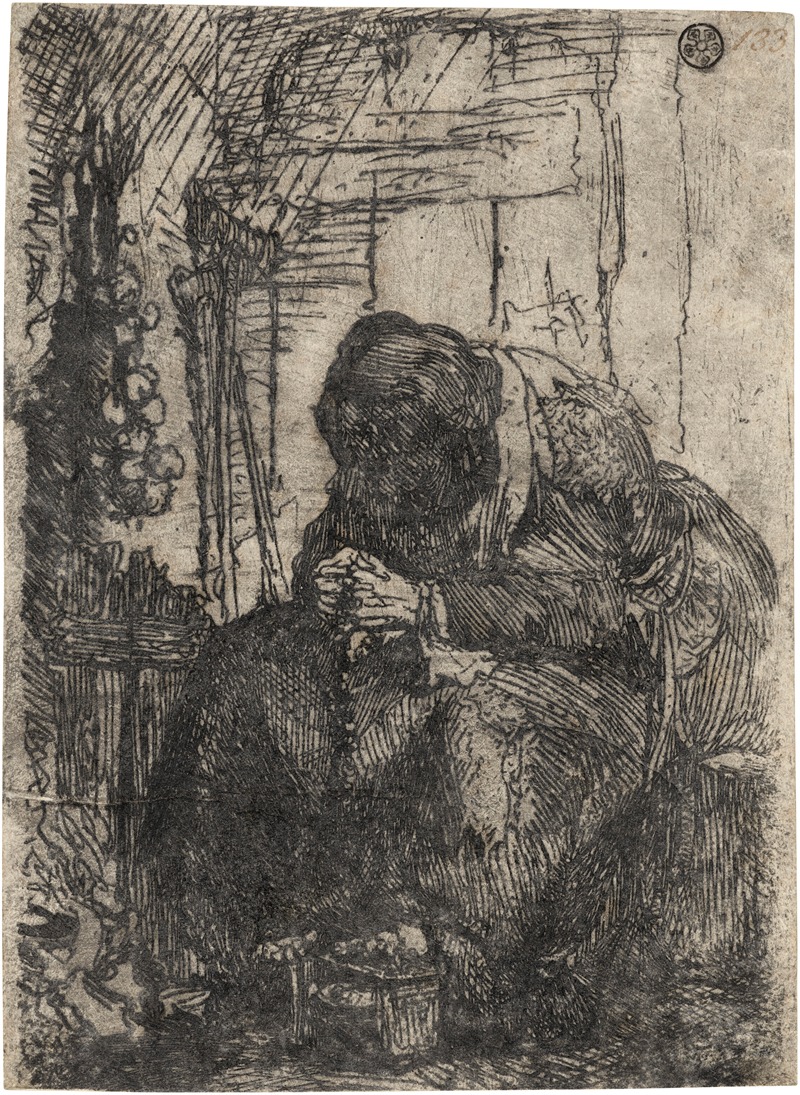
Old Woman seated in a Cottage with a String of Onions on the Wall
A hand-painted replica of Rembrandt van Rijn’s masterpiece Old Woman seated in a Cottage with a String of Onions on the Wall, meticulously crafted by professional artists to capture the true essence of the original. Each piece is created with museum-quality canvas and rare mineral pigments, carefully painted by experienced artists with delicate brushstrokes and rich, layered colors to perfectly recreate the texture of the original artwork. Unlike machine-printed reproductions, this hand-painted version brings the painting to life, infused with the artist’s emotions and skill in every stroke. Whether for personal collection or home decoration, it instantly elevates the artistic atmosphere of any space.
"Old Woman seated in a Cottage with a String of Onions on the Wall" is a painting attributed to the Dutch artist Rembrandt van Rijn. Rembrandt, born in 1606 in Leiden, is widely regarded as one of the greatest visual artists in the history of art and the most important in Dutch art history. His contributions to art came during the Dutch Golden Age, a period of great wealth and cultural achievement in the Netherlands.
This particular painting, "Old Woman seated in a Cottage with a String of Onions on the Wall," is an example of Rembrandt's skill in capturing the human condition and his mastery of light and shadow. The painting depicts an elderly woman seated in a modest interior, with a string of onions hanging on the wall behind her. The setting is simple and domestic, reflecting the everyday life of the time.
The old woman is portrayed with a sense of dignity and introspection. Her expression is contemplative, and she appears to be lost in thought. Rembrandt's use of chiaroscuro, the contrast between light and dark, is evident in this work. The light falls gently on the woman's face and hands, highlighting her features and creating a sense of depth and volume. The background remains in shadow, drawing the viewer's attention to the subject.
The string of onions on the wall is a notable detail in the painting. Onions were a common item in Dutch households during the 17th century, used both for cooking and for their believed medicinal properties. The inclusion of such a mundane object adds to the realism of the scene and provides a glimpse into the daily life of the period.
Rembrandt's ability to convey the texture of different materials is also evident in this painting. The roughness of the woman's clothing, the smoothness of her skin, and the papery texture of the onions are all rendered with meticulous attention to detail. This attention to texture and materiality is a hallmark of Rembrandt's work.
The painting is also significant for its emotional depth. Rembrandt had a unique ability to capture the inner life of his subjects, and this is evident in the old woman's expression. There is a sense of melancholy and reflection, suggesting a life of experience and perhaps hardship. This emotional resonance is a key aspect of Rembrandt's portraits and is one of the reasons his work continues to be celebrated.
"Old Woman seated in a Cottage with a String of Onions on the Wall" is a testament to Rembrandt's skill as a painter and his ability to capture the essence of his subjects. It reflects his interest in the human condition and his mastery of light, shadow, and texture. The painting remains an important example of Dutch Golden Age art and continues to be admired for its realism and emotional depth.









